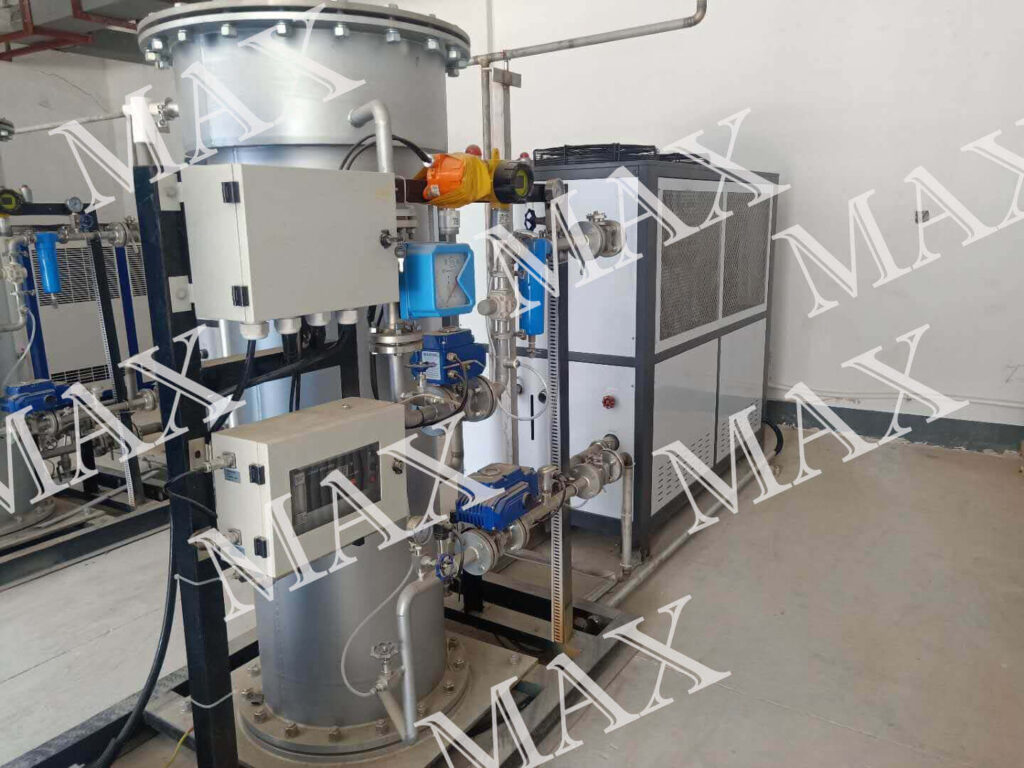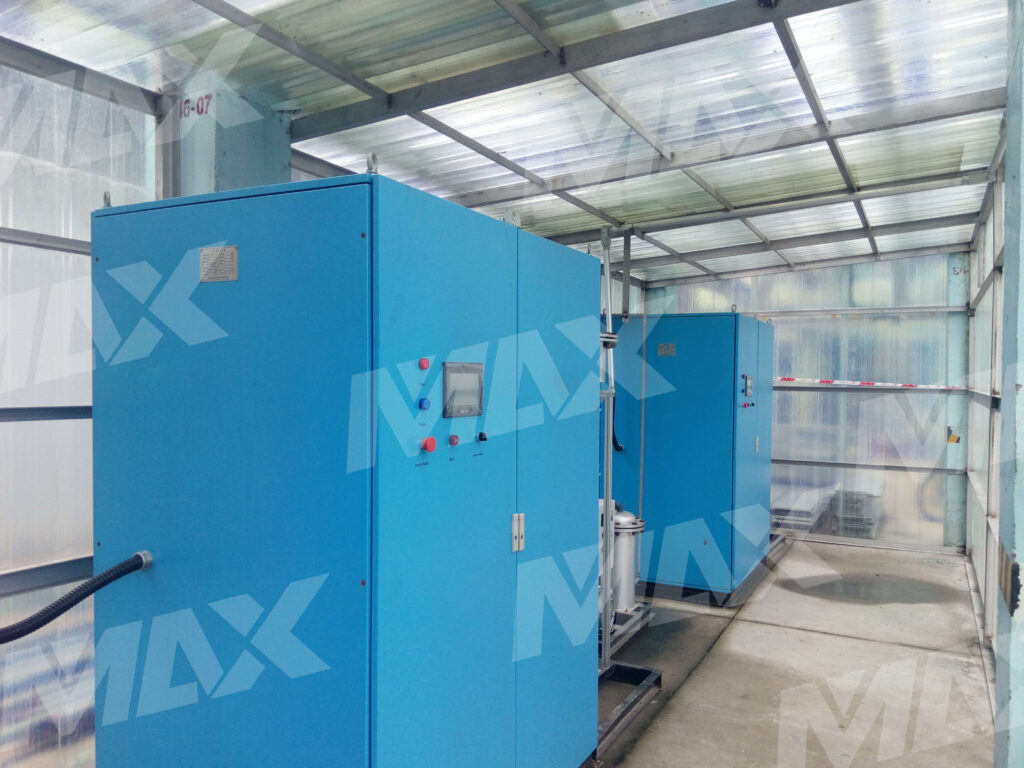
In the era of rapid development and application of chemistry, the pollution caused by this is also quite serious. Therefore, the country has formulated standards requiring that the wastewater and sewage generated after production in factories must be treated before they can be discharged or recycled. Therefore, many enterprises have built their own sewage. Treatment station, as we all know, sewage treatment is a very complicated industry, there will be many procedures in the middle, some COD, BOD, decolorization, toxins, bacteria, viruses, impurities in water, etc. need to go through many procedures to complete the water quality treatment, so in The oxidizing agent cannot be lacked in the application – the ozone generator. Zhan Kun and Liu Mei suggested that the following is the application of ozone to the treatment of printing and dyeing wastewater:
Textile printing and dyeing wastewater is a wastewater with a large amount of water, high chroma, and complex components. Amino compounds and heavy metal elements such as copper, chromium, zinc, and arsenic in the dye structure are highly toxic. At present, 10-200/0 of the dyes in the dyeing process are discharged into the waste water, seriously polluting the environment. With the development of the dye industry and the progress of printing and dyeing processing technology, the stability of the dye structure has been greatly improved, which increases the difficulty of decolorization. At present, the decolorization of printing and dyeing wastewater has become a major problem that urgently needs to be solved in domestic and foreign wastewater treatment. Choosing a simple, economical and effective treatment method has become the research focus of printing and dyeing wastewater decolorization. Most printing and dyeing factories use a combination of chemical treatment and biochemical treatment, but the azo dyes commonly found in printing and dyeing waste have high stability and high water solubility, and are difficult to degrade organic matter. Traditional chemical oxidation and biological methods are difficult to achieve satisfactory results. Ozone is extremely oxidizing, and its oxidation-reduction potential is second only to fluorine in nature. It is often used for sterilization, deodorization, and decolorization of industrial wastewater. As an advanced oxidation technology, it has been used to remove dyes and printing and dyeing wastewater in recent years. Chromaticity and refractory organic matter.
The oxidation of ozone generated by the Max ozone generator has wide adaptability to dyes, high decolorization efficiency, and reduces its COD and BOD values. At the same time, the reduction products of 03 in wastewater and excess 03 can be quickly decomposed into 02 in solution and air, It will not cause secondary pollution to the environment. Therefore, the 0 3 decolorization technology has certain industrial application prospects. The main disadvantage of the current ozone oxidation is the relatively high operating costs. Therefore, decolorization by ozone oxidation can be used as pretreatment of biological treatment, and combined with biological treatment can reduce operating costs.
1. Mechanism of ozone oxidation treatment of wastewater
Ozone is a good oxidant. When treating printing and dyeing wastewater, ozone reacts with simple or complex organic matter to obtain some of the same products. These products are easy to biochemically degrade and have no obvious toxicity. Ozone can not only oxidize inorganic substances in water, such as CN-, NH, etc., but also oxidize organic substances that are difficult to biodegrade, such as aromatic compounds. There are two ways of ozonation reaction: one is that ozone directly participates in the reaction through nucleophilic or electrophilic interaction; the other is that ozone reacts with pollutants through active free radicals (mainly one 0H) under the action of alkali and other factors. Ozone can react with many organic compounds or functional groups: C=C, C three C, aromatic compounds, heterocyclic compounds, carbocyclic compounds, =N—N, =S, C three N, C—N, C—Si, one 0H, one sH, one NH, one CHO, one N=N and so on. The role of ozone in destroying and removing pollutants from wastewater has been extensively studied, and some studies have been performed on the products of ozonation of organic matter. Studies have shown that ozonation products are mainly mono-aldehydes, di-aldehydes, aldehyde acids, mono-carboxylic acids, and di-carboxylic acid organic small molecules.
Oxidation reaction:
1.1 Capture hydrogen atoms and chain carbonylation to generate aldehydes, ketones, alcohols or acids; aromatic compounds are first oxidized to phenols and then oxidized to acids.
1.2 Open the double bond and an addition reaction occurs:
1.3 Oxygen atoms enter the aromatic ring to undergo a substitution reaction. Ozone is also a good decolorizing oxidant. For wastewater containing water-soluble dyes such as reactive, direct, cationic and acidic dyes, the decolorization rate is very high; it also has a good decolorization effect for disperse dyes; but for Other reduction, vulcanization and coatings that exist in the wastewater in a suspended state have poor decolorization effects. The research results of Matsui et al. showed that azo dyes are more susceptible to decolorization by ozone oxidation. The amount of ozone is related to the number of azo groups. For example, for 0.1 mol/1 direct red 2S and direct black 2S, the amount of ozone required is 80 and 130 mol/1 respectively. Ozonation can also be combined with other treatment techniques.
2. Influencing factors
Once ozone is dissolved in water, the following two reactions will occur: one is direct oxidation, which is a slow and obviously selective reaction; the other is the reaction of carboxyl, hydrogen peroxide, organic matter, and humus in water Under the induction of high concentration of hydroxide, it can be decomposed into carboxyl free radicals, and indirectly oxidize organic matter, microorganisms or ammonia. The latter reaction is quite fast and non-selective, and can also oxidize bicarbonate to bicarbonate and carbonic acid. The latter of these two reactions is more intense and has a stronger oxidative capacity. Since hydroxide and organic matter can induce ozone to decompose into carboxyl radicals, low pH conditions are conducive to the direct oxidation reaction of ozone, while high pH values and high organic content conditions are conducive to the indirect oxidation reaction of carboxyl radicals .The rate of self-decomposition of ozone depends largely on the pH value, temperature, UV value, ozone concentration and other removable substances present in the water. Ozone concentration, temperature and contact time: Generally speaking, ozone decolorizes hydrophilic dyes such as direct dyes, acid dyes, basic dyes, and reactive dyes faster, and the effect is better. Therefore, in order to achieve the desired effect of a certain dye The removal effect must increase the dosage of ozone. The oxidation ability of ozone also depends on the ozonation speed of wastewater. The higher the temperature, the faster the oxidation speed and the shorter the time. At normal temperature, 30rain of oxidation contact time is enough to remove 50% of 3-4mmol/L dye in water.
3. Coagulation treatment
Lin. S. H studies have shown that for printing and dyeing wastewater containing low concentration dyes, ozonation can effectively remove chroma and turbidity in water, but for printing and dyeing wastewater containing medium and high concentration dyes, ozonation~n PAC flocculation treatment can be Strengthen the effect of ozone treatment. The combination of ozone and flocculation can increase the removal rate to 70%, and reduce the cost of chemical decolorization agents by 30%. In the Ochtrup water treatment plant in Germany, after the printing and dyeing wastewater was ozonated for 12 minutes, the COD value of the dye was reduced by 60-80%, the AOX was reduced by 60%, and the concentration of polyvinyl alcohol was reduced by 50%, so that the substances that could not be biodegraded before were released. Partial oxidation is beneficial to the next step of biological treatment.
4. Activated carbon adsorption
Activated carbon has good adsorption performance and stable chemical properties, and is the most commonly used adsorbent. The activated carbon adsorption method is suitable for the advanced treatment of wastewater decolorized by ozone oxidation. However, due to the difficulty in operating the activated carbon regeneration system and the high operating costs of the device, the application is limited. The removal of organic matter by ozone bioactivated carbon includes three processes: ozone oxidation, activated carbon adsorption and biodegradation. That is to say, in the removal of organic matter, the strong oxidizing ability of ozone is used first to oxidize organic matter into biodegradable small molecule organic matter, and then use the good adsorption performance of activated carbon to adsorb it, and then the organisms adsorbed on the activated carbon are used for adsorption. The organic matter is biodegraded, and the oxygen generated after ozone decomposition increases the dissolved oxygen in the water, so that the dissolved oxygen in the water is often saturated or close to saturated, and provides necessary conditions for biodegradation in activated carbon treatment. This ozone biological activated carbon water purification process combined with ozone and granular activated carbon filter
5. The development prospect of wastewater ozonation
The development of ozone treatment technology can be viewed from two aspects: one is the combined use of ozone as pretreatment or posttreatment, and other treatment methods, such as flocculation, air flotation, biochemical, etc.; the other is the development of the ozone treatment unit itself, such as light catalysis, metal-catalyzed oxidation, etc. There are many forms of ozone combined with other treatment methods,
Such as: ① O + biochemical (activated sludge, biological activated carbon method);
②O + flocculation + membrane treatment; ③O + membrane treatment; ④O + air flotation (blowing); ⑤O + activated carbon adsorption; ⑥O + flocculation + O. The ozone treatment unit itself has the following forms: ①O,; ②O, +/H, O,; ③O/H, O,/UV; ④O/UV; Its oxides); ⑥Advanced ozone + ultrasonic enhancement + biochemical treatment process can remove azo dyes with good decolorization effect, high organic matter removal rate, and can effectively treat high-concentration PVA desizing sewage.
6 Conclusion
6.1 Max Ozone believes that ozone is a strong oxidant that can react quickly with most organic matter and microorganisms in wastewater, and can remove organic matter that is difficult to biodegrade in wastewater, such as aromatic compounds and other pollutants, and reduce its COD and BOD values. It can also play the role of decolorization, deodorization and sterilization.
6.2 Under alkaline conditions, ozone has a good decolorization effect on wastewater, and the decolorization speed increases significantly with the increase of the initial pH value. The dosage of ozone, contact time, temperature, light, catalyst, etc. have a great influence on the oxidation reaction and decolorization rate.
6.3 Ozonation can improve the biodegradability of printing and dyeing wastewater. Ozone is used as pretreatment or posttreatment of printing and dyeing wastewater, and it is more effective when used in combination with other treatment methods.
6.4 Max ozone generator is used in the application of printing and dyeing wastewater. It has been used a lot in the field. After the use of other equipment, it can meet the national discharge standard

 max ozone generator
max ozone generator
